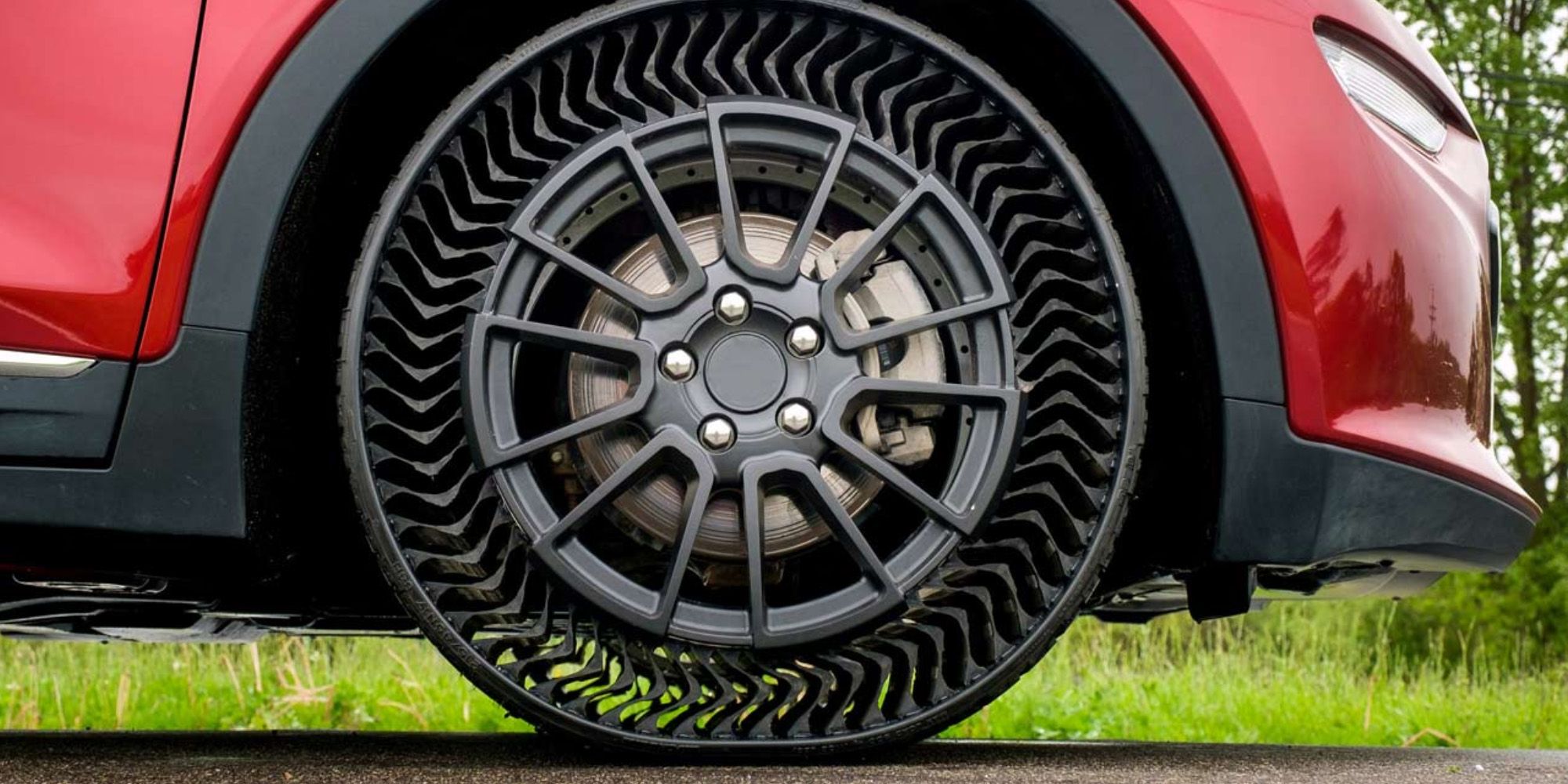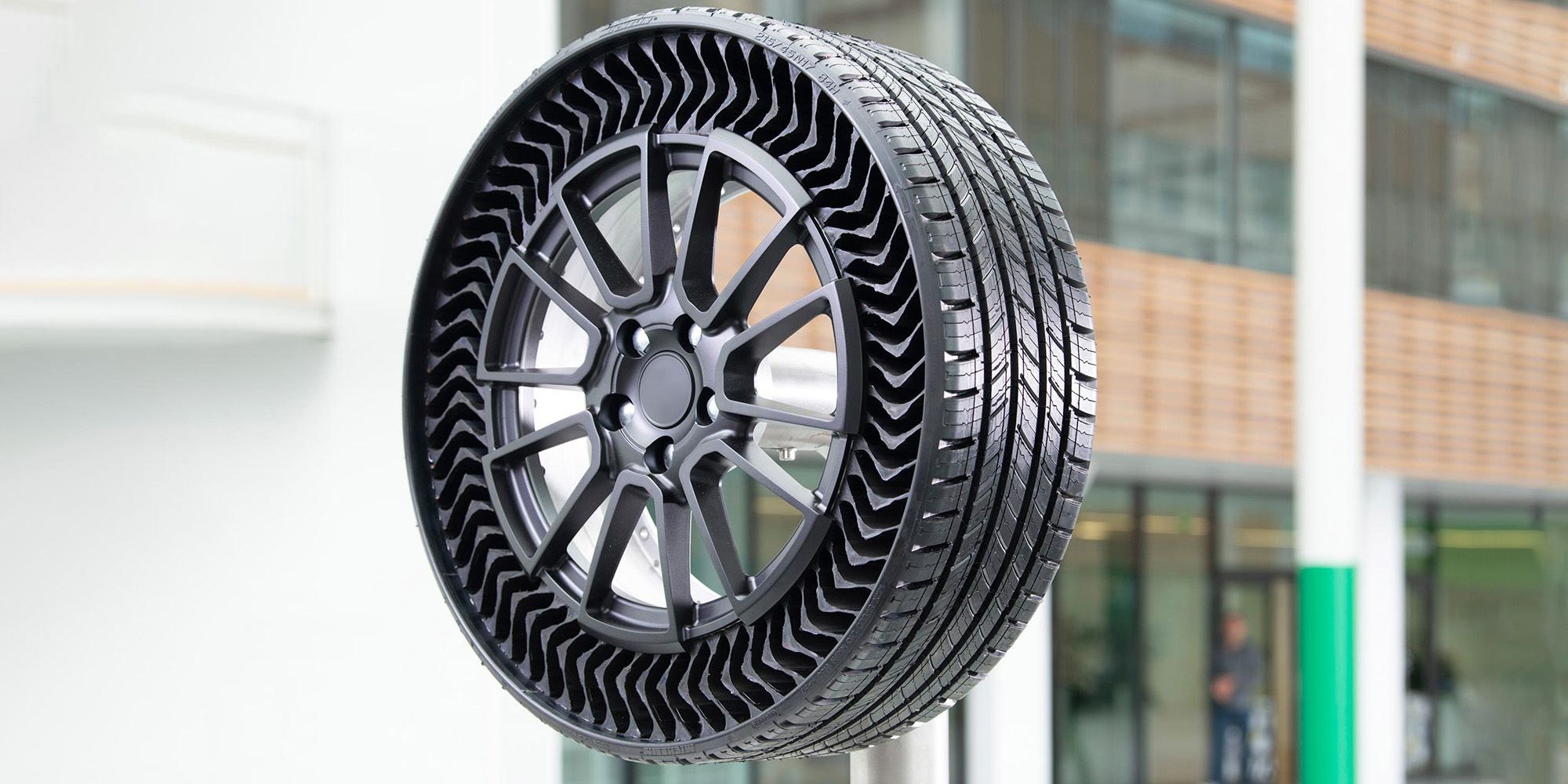Airless tires have been in the making for several decades, with each prototype running into one issue or another. Now, Michelin appears to have made a breakthrough, as they've revealed the Uptis (Unique Puncture-Proof Tire System) for real-world testing and aim to have the finished product on the market by 2024. Initial feedback from media test drivers has been largely positive, stating that their experience didn't feel any different from what they were used to. Ultimately, that is the goal of the Uptis — to become a natural replacement for conventional tires while eliminating maintenance and puncture-related risks.
To date, airless tires have primarily been in use in low-speed applications, such as skid-steer loaders, UTVs, and ride-on lawnmowers. In order to bring these tires to mainstream vehicles, they need to be able to operate at much higher speeds for longer hours. This is where the final phase of testing comes into play. Teaming up with General Motors, Michelin has given itself a few years to run its Uptis tires in the real world and work out the last remaining kinks. If successful, these durable tires are promised to last up to three times longer than conventional tires, while simultaneously relieving the driver of air-filled tire-related headaches.
When first revealing the Uptis in a press release in mid-2019, Michelin stated these new airless tires reduce waste in two different ways, therefore contributing to a sustainable automobile industry. First, in a direct sense, the Uptis is made of less raw material than a conventional tire and therefore cuts down on waste from the construction. The second way is a little less direct and has to do with the number of tires that are currently scrapped early. Michelin estimates that, of the roughly 1 billion tires discarded each year, 12% had an unrepairable puncture or tear and 8% had irregular wear due to improper air pressure within the tire. With these numbers, the Uptis could save 200 million tires from being retired early.
Weather And Price, Addressed
In order for the Uptis to work properly, the spokes that make up the outer ring of the tire need to be able to stay flexible. Off-road conditions such as snow or mud seem like they could block these up and stop them from bending as they need to, but Michelin has reassured that such conditions have been thoroughly tested. From deep snow to caked-on layers of mud, and also standing water, all-natural obstacles appear to have been overcome by the Uptis. To further address the need for deeper treads in certain weather conditions, Michelin is developing a way to retread the Uptis with 3D printing, which would both allow them to renew old tires and apply "winter tires" with ease.
As far as price goes, Michelin is looking to start around the price of run-flat tires, with the longer life span of each Uptis making up for the premium over conventional tires. Additional costs for carrying around a spare tire would also be saved and should retreading with 3D printing technology become readily available in the future, that would further lower the total cost. Aside from money, the environment would also benefit greatly from retreading, and Michelin hopes to use its progress with the Uptis on the development of the first 3D-printed and fully sustainable airless tire.
Source: Michelin


